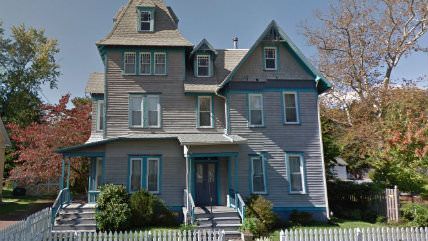New Jersey Enacts Ponderous, Self-Negating Eminent Domain "Reform"

Earlier this month, New Jersey became the 45th state to reform its eminent domain laws in the wake of the U.S. Supreme Court's decision in Kelo v. New London. Unfortunately, the new law provides property owners with little additional protection from condemnation.
The law purports to do two things: first, codify a 2007 New Jersey Supreme Court ruling favorable to property owners and, second, decouple eminent domain from redevelopment subsidies. It fails miserably at both.
When local officials declare that an area is blighted and "in need of redevelopment," the designation both allows them to offer economic development incentives and authorizes the use of eminent domain. But sometimes officials honestly don't want to seize anyone's property; they just want the ability to offer subsidies to developers.
But officials cannot credibly promise not to condemn property once it has been declared blighted. Officials can change their minds. And the next city council isn't bound by past promises. Every redevelopment area is thus under constant threat of eminent domain—intended or not.
Decoupling the incentives from condemnation would remove the threat. And the law appears to do just that, allowing for the creation of "non-condemnation redevelopment areas." But the law lets officials transform a non-condemnation area into a condemnation area if property owners refuse to sell.
WTF, New Jersey.
The law also muddies the issue of blight.
In Gallenthin v. Paulsboro, the New Jersey Supreme Court held that before cities can seize property for private development, officials must show "substantial evidence" the property is blighted.
Prior to Gallenthin, municipal officials could claim a variety of vague, subjective conditions like "faulty arrangement or design," "excessive land coverage," or "obsolete layouts" could justify a blight designation. In Gallenthin, officials argued the mere fact that they could imagine a better use for the property in question, an undeveloped field, meant it was "underutilized" and that they could seize it.
The high court ruled, however, that it would be unconstitutional to seize property without clear, quantitative evidence of a property's malign influence on surrounding areas.
The new law, instead of codifying the court's "substantial evidence" standard, restates the old, vague conditions for blight. Since the Supreme Court's ruling trumps the statute, the section of the law dealing with blight is probably moot on arrival. But property owners will likely be forced into litigation when local officials decide to make sure.
Some clarification is clearly necessary. Officials in Harrison Township recently tried to declare the house pictured above—and others in a similar state of decrepitude—blighted. (They backed off after outraged owners and their neighbors protested.)
In another sneaky bit of nastiness, the new statute gives property owners only 45 days to challenge a blight declaration. So if a city files for condemnation five years after declaring a neighborhood blighted, owners cannot argue that their property isn't blighted—unless they had the foresight to challenge the designation years in advance of a taking that was at that point only a distant, uncertain possibility.
Is the law an absurdity that won't survive a court challenge—or a serious invitation to more eminent domain abuse? It's hard to say. So, again: WTF, New Jersey.


Show Comments (5)